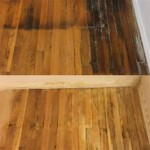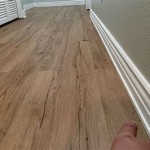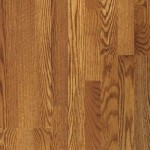Drawbacks of Granite Flooring: A Comprehensive Overview
Granite flooring is a popular choice for residential and commercial spaces due to its perceived durability, natural beauty, and timeless appeal. However, despite its desirable qualities, granite flooring also presents several drawbacks that prospective buyers should carefully consider before making a decision. Understanding these limitations is crucial for making an informed choice that aligns with individual needs, budget, and lifestyle.
This article provides a comprehensive overview of the potential drawbacks associated with granite flooring, covering aspects ranging from cost and installation to maintenance and comfort. By examining these disadvantages, potential homeowners and business owners can accurately weigh the pros and cons of granite flooring and determine if it is truly the optimal choice for their specific requirements.
High Initial Cost
One of the most significant barriers to entry for granite flooring is its high initial cost. Granite is a natural stone that requires extraction, processing, and transportation, all of which contribute to its premium price point. Compared to other flooring options such as vinyl, laminate, or ceramic tile, granite typically commands a significantly higher per-square-foot price. This higher cost includes not only the material itself but also the cost of professional installation, which is usually necessary due to the weight and fragility of the stone.
The cost of granite can vary depending on several factors, including the rarity of the color and pattern, the size and thickness of the tiles or slabs, and the source of the stone. Exotic or unusually colored granite varieties are often more expensive than more common types. Furthermore, larger tiles or slabs tend to be more expensive due to the increased difficulty in handling and the higher risk of breakage during transportation and installation. The distance the granite travels from the quarry to the point of sale can also impact the price; granite sourced from distant locations will naturally incur higher transportation costs.
Beyond the material costs, professional installation is a significant expense that should be factored into the overall budget. Granite is heavy and requires specialized tools and expertise to cut, handle, and install correctly. Improper installation can lead to cracks, uneven surfaces, and other problems that can compromise the aesthetic appeal and structural integrity of the floor. Therefore, it is generally recommended to hire experienced flooring contractors who specialize in granite installation, which can add significantly to the total project cost. Homeowners or businesses with limited budgets should carefully consider whether the long-term benefits of granite outweigh the high upfront investment.
Complex and Labor-Intensive Installation
The installation of granite flooring is a complex and labor-intensive process that requires experience, precision, and specialized tools. Unlike some other flooring materials that can be installed by DIY enthusiasts, granite installation typically necessitates the expertise of professional flooring contractors. This is due to the weight and fragility of the stone, the need for precise cutting and fitting, and the importance of proper subfloor preparation.
Before granite can be installed, the subfloor must be thoroughly inspected and prepared. This may involve leveling the surface, repairing any cracks or imperfections, and ensuring that the subfloor is clean and free from debris. A proper subfloor is crucial for ensuring that the granite tiles or slabs are properly supported and that the finished floor is level and stable. Any inadequacies in the subfloor can lead to cracks, uneven surfaces, and other problems that can compromise the longevity and appearance of the floor.
Cutting granite to fit specific dimensions or around obstacles such as pipes or corners requires specialized tools such as wet saws and diamond blades. These tools are necessary to prevent chipping or cracking the stone during the cutting process. Furthermore, precision is paramount to ensure that the tiles or slabs fit together seamlessly and that the finished floor has a uniform appearance. Any miscalculations or imprecise cuts can result in unsightly gaps or uneven joints.
Once the granite is cut and fitted, it must be carefully laid and secured to the subfloor using a bonding agent such as thin-set mortar. The weight of the granite requires careful handling to prevent damage during the installation process. Furthermore, the tiles or slabs must be properly aligned and leveled to ensure a smooth and even surface. After the granite is installed, the joints between the tiles or slabs must be grouted to seal them and prevent moisture from seeping underneath. The grout must be carefully applied and cleaned to avoid staining the granite. Given the complexity and labor involved, professional granite installation is a significant factor to consider when evaluating the overall cost and feasibility of this flooring option.
Susceptibility to Staining and Etching
Despite its perceived durability, granite is a porous material that is susceptible to staining and etching if not properly sealed and maintained. The porosity of granite means that it can absorb liquids such as oil, wine, or juice, which can penetrate the surface and leave behind unsightly stains. Certain substances, such as acidic liquids like vinegar or lemon juice, can also etch the surface of granite, leaving behind dull or discolored spots. This vulnerability to staining and etching necessitates regular sealing and careful maintenance to preserve the appearance of granite flooring.
Sealing granite is an essential step in protecting it from stains and etching. A sealant creates a barrier on the surface of the granite that repels liquids and prevents them from penetrating the stone. However, sealants are not permanent and need to be reapplied periodically to maintain their effectiveness. The frequency of resealing depends on the type of sealant used, the level of foot traffic, and the types of substances to which the floor is exposed. Generally, it is recommended to reseal granite flooring every one to three years.
Even with regular sealing, granite flooring requires careful maintenance to prevent staining and etching. Spills should be cleaned up immediately with a soft cloth and a pH-neutral cleaner. Abrasive cleaners or harsh chemicals should be avoided, as they can damage the sealant or etch the surface of the granite. Furthermore, it is advisable to use mats or rugs in high-traffic areas or areas prone to spills, such as kitchens and bathrooms, to provide an additional layer of protection. Regular sweeping or vacuuming can also help to remove dirt and debris that can scratch or dull the surface of the granite. The need for ongoing sealing and careful maintenance can be a significant drawback for homeowners or businesses seeking a low-maintenance flooring option.
Cold and Hard Surface
Granite is naturally a cold and hard material, which can make it feel uncomfortable underfoot, especially in colder climates. Unlike softer flooring options such as carpet or cork, granite does not provide any cushioning or insulation. This can make it less desirable for areas where comfort is a priority, such as bedrooms or living rooms. The coldness of granite can also increase heating costs in the winter, as it requires more energy to warm the floor.
The hardness of granite can also be a drawback for certain individuals, such as the elderly or those with joint problems. The lack of cushioning can make it uncomfortable to stand or walk on granite for extended periods of time. Furthermore, falls on granite can result in more serious injuries than falls on softer surfaces. This is a crucial consideration for families with young children or elderly individuals.
While the coldness and hardness of granite can be mitigated to some extent with the use of rugs or radiant heating systems, these solutions can add to the overall cost of the flooring project. Rugs can provide a softer surface and add warmth to a room, but they can also detract from the aesthetic appeal of the granite. Radiant heating systems can warm the floor, but they require additional installation and operating costs. Therefore, the inherent coldness and hardness of granite should be carefully considered when evaluating its suitability for different spaces and lifestyles.
Limited Design Flexibility
While granite is available in a variety of colors and patterns, its design flexibility is somewhat limited compared to other flooring options such as tile or vinyl. Granite is a natural stone, and the colors and patterns are determined by geological processes. This means that the range of available options is constrained by what is found in nature. Furthermore, the natural variations in color and pattern can make it challenging to achieve a uniform look across a large area.
Unlike manufactured flooring materials such as tile or vinyl, granite cannot be easily customized to match specific design preferences. While it is possible to cut granite into different shapes and sizes, the overall appearance is still dictated by the natural characteristics of the stone. This can be a drawback for individuals seeking a highly customized or unique flooring design. The veining and patterns that make each piece of granite unique can also present a challenge when trying to create a consistent or symmetrical design.
Furthermore, the limited design flexibility of granite can make it challenging to coordinate with other elements in a room, such as walls, cabinets, and furniture. While granite can complement a wide range of design styles, it may not be the best choice for those seeking a highly specific or coordinated aesthetic. The natural variations in color and pattern can also make it difficult to find granite that perfectly matches existing decor. The limited ability to customize granite makes it less versatile than some other flooring choices.
Potential for Radon Emission
Granite, being a natural stone, contains trace amounts of uranium, which can decay and release radon gas. Radon is a colorless, odorless, and radioactive gas that is known to be a carcinogen. While the levels of radon emitted by granite are typically low, prolonged exposure to elevated levels of radon can increase the risk of lung cancer. This potential for radon emission is a concern for some homeowners and should be considered when evaluating the suitability of granite flooring.
The amount of radon emitted by granite can vary depending on the source of the stone and its uranium content. Granite from certain regions is known to have higher levels of uranium than granite from other regions. Furthermore, the size and thickness of the granite tiles or slabs can also affect the rate of radon emission. Larger and thicker pieces of granite may emit more radon than smaller and thinner pieces.
Homeowners concerned about radon emission from granite flooring can take several steps to mitigate the risk. The most important step is to have the home tested for radon levels. Radon testing is relatively inexpensive and can be performed by a professional or with a DIY test kit. If radon levels are found to be elevated, mitigation measures can be implemented to reduce the concentration of radon in the home. These measures may include sealing cracks and openings in the foundation, installing a radon mitigation system, or improving ventilation. While the risk of radon emission from granite flooring is generally low, it is essential to be aware of the potential hazard and take appropriate steps to protect your health.

The Pros And Cons Of Granite Floor Tiles 2025 Today S Homeowner

Is A Granite Countertop Right For Your Kitchen Maxspace

Stone Flooring Pros Cons Tile Urban Customs

Advantages And Disadvantages Of Granite Flooring Paetani Buildwell Pvt Ltd Pbpl Blog

Granite Kitchen Floors The Pros And Cons You Need To Know

Granite Flooring Tiles Advantages And Disadvantages

Which Is Better Granite Or Marble Flooring Skytouch

Granite Stone Advantages Disadvantages Of

5 Drawbacks Of Granite Counters Gold

Which Is Better Granite Or Marble Flooring Ceraite
Related Posts








